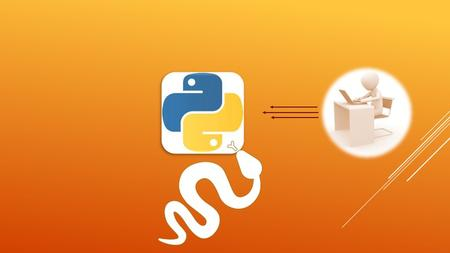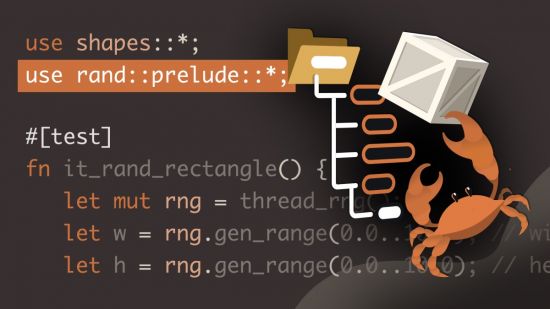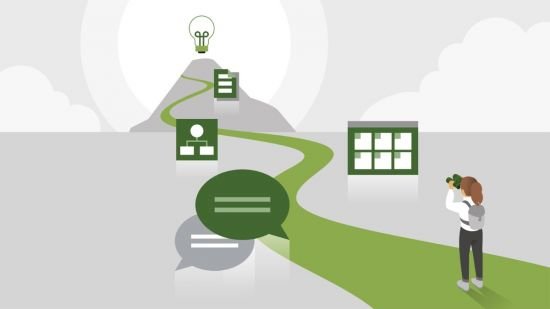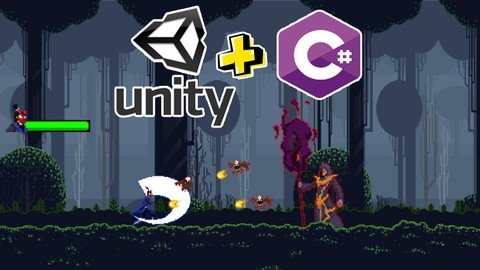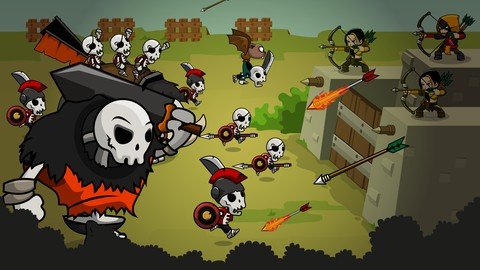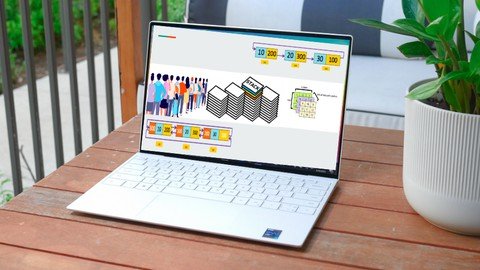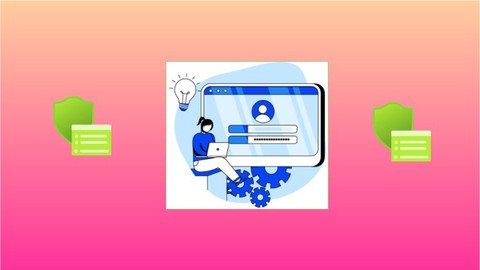Complete Guide To Design Thinking
Genre: eLearning | MP4 | Video: h264, 1280x720 | Audio: AAC, 44.1 KHz
Language: English | Size: 12.8 GB | Duration: 16h 55m
Design Thinking - Empathy, Define, Ideation, Prototyping & Testing. PLUS Mindsets, Principles, Process, Implementation
What you'll learn
Demonstrate Stakeholder Analysis: Recognition, Maintenance, Steps, Management & Usage
Learn how to do a SWOT Analysis (2x2 Frameworks): Strengths, Weaknesses, Threats, Opportunities
Understand the Design Thinking Preliminaries such as Recap, Team Factor, Funding & Time Constraints
Learn the Kinds of Problems to solve with Design Thinking
Learn User Journey Maps: Activities, Pain Points, Basic Template, Touchpoints
Case Studies: Kelloggs, Incubators and Mobisol
Define what is Design Thinking: Mindset, Creative Confidence, Human Centred & Features
identify the different Design Challenges and Considerations
Lay down the Principles and Stages of the Design Thinking Process
Discuss "Empathy" as a Design Thinking Stage
Discuss "Define" as a Design Thinking Stage
Demonstrate Customer Journey Mapping Using FASGO to identify Feelings, Touchpoints
Introduce the Ishikawa Fishbone Diagram: Root Cause Analysis and Key Concepts
Learn the Why Approach to Root Cause Analysis
How to do analysis and synthesis in Design Thinking
Learn Points of View & The "How Might We" Method for Discovering Pain Points
Discuss "Ideation" as a Design Thinking Stage
Learn "Brainwriting" with Examples & Types of Brainstorming
Understand the Power of Mind maps to Generate Creative Thinking: Learn How & Why
Define Sketch storms: What are they and why do we use them?
Learn SCAMPER: Substitute, Combine, Adapt, Modify, Put to Use, Eliminate, Reverse
Learn how to select solutions in Design Thinking
Define TRIZ and Learn the Theory of Inventive Problem Solving
Discuss "Prototyping" as a Design Thinking Stage
Discuss "Testing" as a Design Thinking Stage
Learn the Business Model Canvas and How to use it to Design & Develop Solutions
Learn How Desirability, Feasibility and Viability Achieves Innovation Sweet Spot
How to do a Successful Implementation Following Design Thinking
Requirements
There are no pre-requisites or requirements for this course
Description
+ Get instant access to an 86-page Design Thinking workbook
+ 17 hours of clear and concise step by step instructions, lessons and engagement
+ Introduce yourself to our community of students in this course
+ Encouragement and celebration of your progress throughout the course
This course is designed for anyone who is interested in learning more about design thinking. The course will help you explore its concepts, techniques, processes to solve problems and use the Design thinking tools to drive innovations in your organization to channelize critical factors of success and failures.
What will you learn
Explore the different communication models and processes that any organization may adapt
Differentiate written communication barriers such as perceptual, cultural, language, etc.
Know the different concepts of business writing: context, closure, decision, and action
Learn the different workplace communication methods: horizontal, upward, and downward
Understand your audience's culture, demographics, experience, habits, etc. for better communication
Define what professional business writing is and its importance
Understand the factors on why written communication fails
Improve an organization's communication aspect through Business Writing
Lay down the purpose and process of communication as a foundation for professional business writing
Learn the most important considerations when communicating
Identify the different communication success and failure factors
Learn and put the writing process into practice
Define the characteristics of a good professional business writing
Be able to create the first draft and select an information structure
Learn the different techniques in paraphrasing and rewriting
Apply the different rules of grammar
Review the different parts of speech and their usage
Explore different guidelines, strategies, and steps in persuasive writing
Substantiate ideas through various tricks and techniques
Learn how to edit and proofread a communication letter
Understand and apply the different guidelines and formats of a business letter
Identify the different types of business letters and when to use them
Learn how to use emails as a means of communication
Apply different tips and tricks during business presentations
Conduct business meeting through several guides and formats
Prepare a comprehensive minutes of the meeting: what and what not to include
...and more!
Contents and Overview
You'll start with the Design Thinking Course Insights; Why people do business; Maslow's Hierarchy of Needs; Problem Solving Approaches; Kelloggs' Case Study; Mobisol Solar Home System Case Study; Embrace Portable Incubators; Why do we need Design Thinking; What is Design Thinking; Design is a way of thinking; Design Thinking is a Mindset; Design Thinking as Human Centered Process; Empathy - Design Thinking Mindset; Optimism - Design Thinking Mindset; Iteration - Design Thinking Mindset; Creative confidence - Design Thinking Mindset; Making - Design Thinking Mindset; Embracing Ambiguity - Design Thinking Mindset; Learning From Failure - Design Thinking Mindset; How Design Thinking helped G.E. Healthcare; Solution for healthcare problem; Key Features of Design Thinking; Recap of what is Design Thinking and its mindsets; Four Principles of Design Thinking; Stages of Design Thinking Process; Design Thinking: a non-linear process; Types of thinking in the Design Thinking Process; Define Phase of Design Thinking Process; Ideate Phase of Design Thinking Process; Prototype stage of Design Thinking Process; Test Stage of Design Thinking Process; Considerations before choosing area of design challenge; Which user experience we are trying to improve in design challenge.
Then you will learn about Preliminaries of Design Thinking; Team Factor in the Preliminaries of Design Thinking; Funding Factor in the Preliminaries of Design Thinking; Time Constraints Factor in the Preliminaries of Design Challenge; First Stage of Design Thinking; What is Empathy; Empathy Towards People or Context; Empathy towards Complexities; Is Empathy a Gadget; Riess and Todd Research - Empathy as a non-verbal communication explanation; Non-Verbal Communication Elements; Things to be considered while communicating; 3 ways to empathize; Observing as a way to empathize; Engaging as a way to empathize; Empathy Interview-who to recruit; Kind of questions to ask from users; Example of user interviews; Activity: Empathize; Defining the problem - lecture overview; Define Stage; Design Thinking Toolkit; What is a Persona and its use; Empathy Map; Filling the quadrants according to persona; Tool for organizing insights in a 2X2 framework; Food Delivery Service Example; Important points for 2x2 framework; Tools to understand user problems; Step by step understanding of User Journey; What are User Journey Maps; Identifying Activities and Pain Points-Example; What is a Customer Journey Map and its Phases; Touch points and Channels - Customer Journey Maps; Customer Journey Map - Basic Template Explanation; Internal Ownership - Reduce Customer Effort; Customer Journey Map Touchpoints Explanation - Example.
We will also cover Customer Journey Mapping Using FASGO To identify Feelings, Touchpoints; How FASGO discovers pain points of users using Customer Journey Map; Identifying the feelings,channel,touch-points of User Problems by FASGO-part 1; Identifying the feelings,channel,touch-points of User Problems by FASGO-part 2; Root Cause Problem and its two major techniques; Concept behind Ishikawa Fishbone Diagram; What is Ishikawa Fishbone Diagram; How to Develop Ishikawa Fishbone Diagram; The 5 Why Approach; Understanding the 5 Why Approach by Flowchart-Toyota training to employees; Using the 5 Why Approach Template to find the root cause of a problem.
This course will also tackle What is meant by Analysis and Synthesis; Synthesize; Bases of Themes; Discovering Pain Points related to Themes; Insights Themes and Problems of Users; Creation of a Point of View Statement; Who are the Stakeholders; Types of Stakeholders; What is Stakeholders Analysis; Recognizing Stakeholders; Steps in a Stakeholders Analysis; Maintaining the Stakeholders Record; Managing Stakeholders; Use of Stakeholders Analysis; Why Mapping of Stakeholders is important; Third Phase of Design Thinking; Concept of Ideation; Concept of Creative Thinking; Way to use an Mug -Creative thinking Technique; How to Generate Ideas; Brainstorming Rules; Types of Brainstorming-Brainstorming using Flipcharts; Types of Brainstorming-Brainstorming using Post-its; Type of Brainstorming-Brainwriting; Brainwriting Template.
This course will also discuss Types of Brainstorming-Alphabet Brainstorming; Types of Brainstorming-Worst Possible Ideas; Creative Thinking Technique-Mind Maps; Why we need Mind Maps; How to Draw Mind Maps; What is a Sketchstorm and why we are using it; What SCAMPER stands for; What is meant by SUBSTITUTE; What is meant by COMBINE; What is meant by ADAPT; What is meant by MODIFY; Put to another use prompt; What is meant by ELIMINATE; What is meant by REVERSE; How to Select Solutions; Who is Generic Altschuler; What is meant by TRIZ: Principles and Parameters; Contradiction Matrix.
Next, you will learn about Prototyping Company concept; What is a Prototype; Why Prototyping is important; Concept of Co-Creation; Types of Prototypes; Before Testing-Template; Necessary things to be done before Testing; How to Test; Why Testing is Important; What to do next in Testing; Types of Testing; Important points about Testing; Learn The Business Model Canvas; Use It To Design & Develop Solutions; Learn How Desirability, Feasibility and Viability Achieves Innovation Sweet Spot; Looking Ahead To A Successful Implementation Following Design Thinking
Who are the Instructors?
Shaista Fatima from Digital Regenesys is your lead instructor - a professional making a living from her teaching skills with expertise in Design Thinking. She has joined with content creator Peter Alkema to bring you this amazing new course.
You'll get premium support and feedback to help you become more confident with finance!
Our happiness guarantee...
We can't wait to see you in the course!
Enroll now, and we'll help you write better than ever!
Peter and Shaista
Who this course is for
Anyone who is interested in learning design thinking to solve problems for users
Anyone who is looking for problem solving techniques
Screenshots
